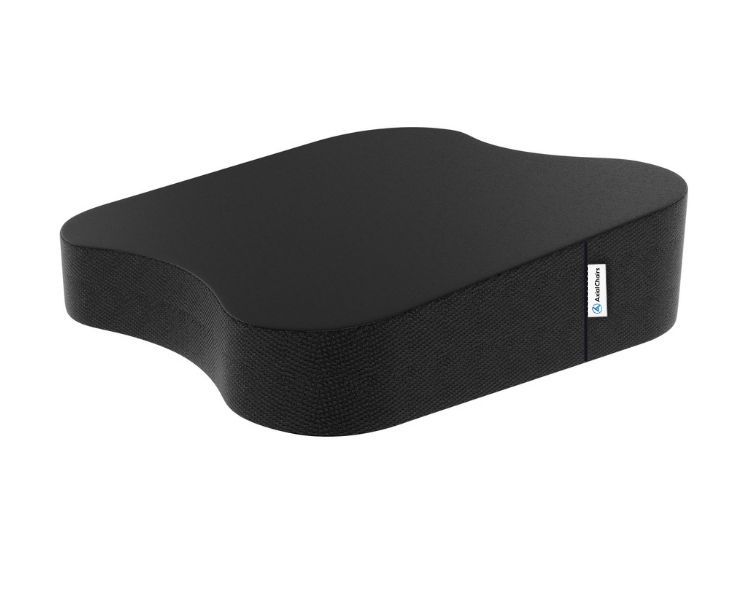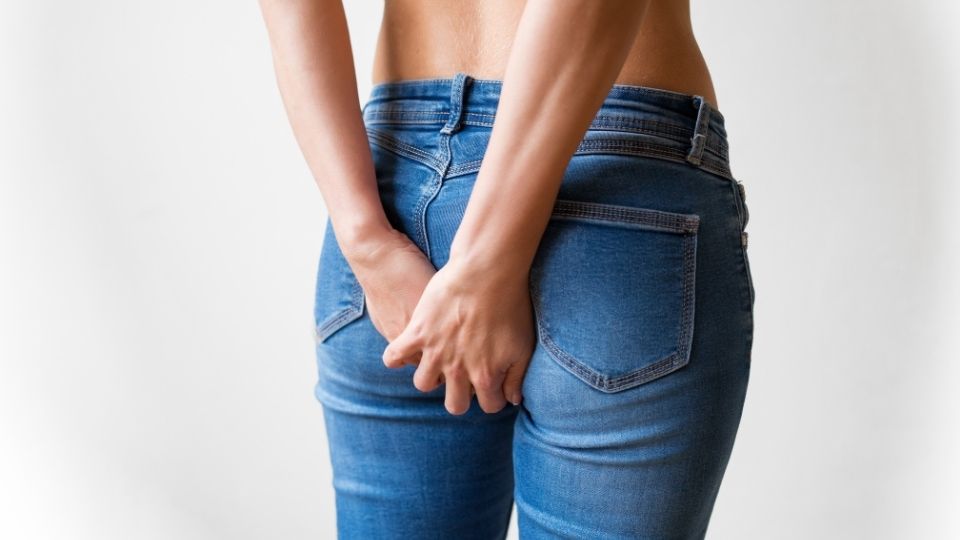As we all become increasingly aware of the dangers of a sedentary lifestyle, more and more people are beginning to question whether there is a direct relationship between sitting too much and pain in the buttocks. Despite being a common symptom associated with prolonged sitting, many people still don’t understand how the movement patterns they use during their activities can contribute to developing this kind of discomfort. As your physician, I’m here to help you make sense of it all so that you can properly identify what may be causing your symptoms and work towards finding solutions!
As a general rule, sedentary behavior, such as prolonged sitting, can lead to pain and discomfort in various parts of the body, including the buttocks. This is because sitting for extended periods of time can cause compression and pressure on the gluteal muscles and nerves, leading to painful conditions such as piriformis syndrome and sciatica.
As a seasoned chiropractor with over 30 years of practice, and training as an ergonomist and author on sitting, I’m well-equipped to provide valuable insights. My contributions to this field have been well-received, with TV appearances and a successful Kickstarter campaign for my ergonomic seat cushions. If you’re searching for answers, I’m confident that I can offer meaningful guidance.
Get 35% off Orthopedic Seat Cushion Video Guide Video GuideBest Seat Cushion for Buttock ComfortDoctor's Recommendation
Black Friday Offer!
Product DetailsResearch-based Design
Recommended ForBack Discomfort
The Impact of Prolonged Sitting on the Body
Prolonged sitting has become an increasingly common issue in our modern, sedentary lifestyles. This can lead to a variety of health concerns, one of which is pain in the buttocks. When we sit for extended periods, the pressure on our lower back, pelvis, and hips increases, potentially causing discomfort and pain in the surrounding muscles and tissues.
The Role of the Piriformis Muscle
One of the key muscles involved in buttock pain from sitting too much is the piriformis muscle. This small, pear-shaped muscle is located deep within the buttocks, and plays a vital role in stabilizing the hip joint and allowing us to move our legs. When we sit for long periods, the piriformis muscle can become tight and irritated, leading to pain and discomfort in the area.
Sciatica and Buttock Pain
Another possible cause of buttock pain from sitting is sciatica, a condition where the sciatic nerve becomes irritated or compressed. The sciatic nerve is the longest and largest nerve in the body, running from the lower back through the buttocks and down the legs. Prolonged sitting can cause the vertebrae in the lower back to compress, putting pressure on the sciatic nerve and leading to pain in the buttocks, hips, and legs.
All Day Comfort & Support
How Chiropractic Care Can Help
Chiropractic care can be an effective solution for addressing pain in the buttocks caused by sitting too much. Through spinal manipulation and other chiropractic techniques, we can help to restore proper alignment and function to the spine and pelvis, relieving pressure on the piriformis muscle and sciatic nerve. Additionally, we can recommend stretches and exercises to strengthen the surrounding muscles and improve flexibility, further alleviating pain and discomfort.
Tips for Reducing Buttock Pain from Sitting
There are several strategies that can help minimize the risk of developing pain in the buttocks due to prolonged sitting. First, make a conscious effort to take breaks and stand up or walk around throughout the day. This can help to alleviate pressure on the lower back and buttocks. Next, consider using an ergonomic chair with proper lumbar support to promote good posture and reduce strain on the spine. Finally, incorporating regular exercise and stretching into your daily routine can help to maintain muscle strength and flexibility, ultimately reducing the risk of pain and discomfort from sitting too much.
Why Does My Bum Hurt When I Sit For Too Long
Many people experience discomfort or pain in their buttocks when sitting for extended periods. This discomfort can be attributed to various factors, such as poor posture, lack of movement, and pressure on the sciatic nerve. When you sit for a long time, your gluteal muscles can become strained or fatigued, leading to aches and pains in the area.
Pain in Bottom When Sitting
One common cause of pain in the buttocks while sitting is a condition called piriformis syndrome. The piriformis muscle, located deep in the buttocks, can become irritated or inflamed, leading to pain and discomfort. When this muscle becomes tight, it can compress the sciatic nerve, causing radiating pain down the leg. This pain can be exacerbated by prolonged sitting, especially on hard surfaces or in awkward positions.
I explain the concept of my ergonomic design on a TV show HERE
Black Friday: 35% Off Today
Typical Delivery 1-3 Days
Designing a Supportive Chair: My Secret Guide
To efficiently address your seating concerns, it’s important to examine various elements, with chair adaptation being a key aspect. Numerous techniques can help you achieve this, like incorporating an ergonomic seat pad and lumbar support. These extra features can reduce stress on your back and legs, enhancing comfort and posture during prolonged sitting periods. Also, verify that your feet are flat on the floor and that there’s ample room between your chair and desk. By applying these tips, any conventional rigid chair can be transformed into an ergonomic sanctuary that encourages long-term health and well-being.
Ergonomic Seating Accessory
An ergonomic seat wedge (above) can be applied to properly align your spine and promote stability. This thoughtfully designed natural latex seating accessory helps to reinforce core muscles while relieving tension in other body areas, such as the shoulders and neck. Additionally, sitting upright is less demanding on your hips and knees, as it engages more muscle groups at once compared to reclining against a cushioned surface. This upright position wards off the adoption of stress-causing habits that individuals may unknowingly develop while working.
Best Seat Cushion for Buttock ComfortAxial Ergonomic Seat Cushion® | Seat Chair Wedge
Quick Guide: A 30-Second Summary

All Day Comfort & Support
Product Name
Axial Designs™ Seat Cushion
Price
$149
Warranty
1 Year
Type
Posture Wedge
Top Layer
100% Natural Latex (Molded)
Bottom Layer
High-Density Foam
Top Material
Isometric Grippy Vegan Leather
Bottom Material
Non-Slip Material
Side Material
3D Breathable Fabric
How to Relieve Buttock Muscle Pain
There are several ways to relieve buttock muscle pain, including:
- Stretching: Gently stretching the gluteal and piriformis muscles can help alleviate tension and discomfort. Try incorporating these stretches into your daily routine, especially after long periods of sitting.
- Exercise: Regular physical activity can help strengthen the muscles in your buttocks and lower back, reducing the risk of pain and discomfort. Aim for at least 30 minutes of moderate exercise most days of the week.
- Posture: Pay attention to your posture when sitting. Maintain a neutral spine, with your shoulders back and your feet flat on the floor. Consider using a cushion or lumbar roll to support your lower back.
- Breaks: Take regular breaks from sitting. Stand up, walk around, and stretch your muscles every 30-60 minutes to reduce the risk of pain and discomfort.
Buttock Pain When Sitting Home Remedy
Some home remedies can help alleviate buttock pain when sitting, including:
- Hot and cold therapy: Applying ice to the affected area for 15-20 minutes can help reduce inflammation and numb the pain. Follow this with a warm compress or heating pad for 15-20 minutes to relax the muscles and promote healing.
- Over-the-counter pain relief: Non-prescription pain relievers, such as ibuprofen or naproxen, can help manage pain and inflammation. Be sure to follow the recommended dosage instructions and consult your healthcare provider if you have any concerns.
- Massage: Gently massaging the affected area can help relieve muscle tension and promote blood flow to the area, aiding in healing and pain relief.
Buttock Pain When Sitting and Lying Down
If you’re experiencing buttock pain when sitting and lying down, it’s important to address any underlying issues and modify your daily habits. Consider using a cushion or specially designed pillow to provide additional support when sitting or lying down. Experiment with different sleeping positions, such as lying on your side with a pillow between your knees, to alleviate pressure on the affected area. Finally, consult with a chiropractor or healthcare professional to determine the best course of action for your specific situation.
Many people experience discomfort or pain in their buttocks when sitting for extended periods. This discomfort can be attributed to various factors, such as poor posture, lack of movement, and pressure on the sciatic nerve. When you sit for a long time, your gluteal muscles can become strained or fatigued, leading to aches and pains in the area. This pain can be temporary due to a bruise or minor injury, or it can be caused by inflammation or irritation of the ischial bursa.
One common cause of pain in the buttocks while sitting is a condition called piriformis syndrome. The piriformis muscle, located deep in the buttocks, can become irritated or inflamed, leading to pain and discomfort. When this muscle becomes tight, it can compress the sciatic nerve, causing radiating pain down the leg. This pain can be exacerbated by prolonged sitting, especially on hard surfaces or in awkward positions. Sitting too long can also cause soreness in the hip flexors and lower back.
I’ve written a complete hands-on review about the best sitting position for sciatica, and here is what I tested best with my sciatica patients.
All Day Comfort & Support
There are several ways to relieve buttock muscle pain, including:
- Stretching: Gently stretching the gluteal and piriformis muscles can help alleviate tension and discomfort. Try incorporating these stretches into your daily routine, especially after long periods of sitting. Stretching can provide pain relief and help prevent the symptoms of piriformis syndrome.
- Exercise: Regular physical activity can help strengthen the muscles in your buttocks and lower back, reducing the risk of pain and discomfort. Aim for at least 30 minutes of moderate exercise most days of the week to keep your muscles healthy and flexible.
- Posture: Pay attention to your posture when sitting. Maintain a neutral spine, with your shoulders back and your feet flat on the floor. Consider using a cushion or lumbar roll to support your lower back. Proper posture can prevent pain and other symptoms related to sitting for extended periods.
- Breaks: Take regular breaks from sitting. Stand up, walk around, and stretch your muscles every 30-60 minutes to reduce the risk of pain and discomfort. Sitting causes strain on the body, so taking breaks can help alleviate this stress.
Some home remedies can help alleviate buttock pain when sitting, including:
Hot and cold therapy: Applying ice to the affected area for 15-20 minutes can help reduce inflammation and numb the pain. Follow this with a warm compress or heating pad for 15-20 minutes to relax the muscles and promote healing. This can cause temporary relief for tailbone pain and other causes of buttock pain.
Over-the-counter pain relief: Non-prescription pain relievers, such as ibuprofen or naproxen, can help manage pain and inflammation. Be sure to follow the recommended dosage instructions and consult your healthcare provider if you have any concerns. These medications can provide pain relief for various causes of buttock pain, including piriformis syndrome.
Massage: Gently massaging the affected area can help relieve muscle tension and promote blood flow to the area, aiding in healing and pain relief. Massages can alleviate symptoms related to sitting and buttock pain, such as tightness in the hip flexors and lower back.
If you’re experiencing buttock pain when sitting and lying down, it’s important to address any underlying issues and modify your daily habits. Consider using a cushion or specially designed pillow to provide additional support when sitting or lying down. Experiment with different sleeping positions, such as lying on your side with a pillow between your knees, to alleviate pressure on the affected area. Finally, consult with a chiropractor or healthcare professional to determine the best course of action for your specific situation. Seek medical advice if your pain persists or worsens, as it may indicate a more serious issue.
Black Friday: 35% Off Today
Typical Delivery 1-3 Days
Conclusion
All in all, sitting for long periods of time can lead to physical and mental health issues, as well as cause pain in the buttocks over time. For people who spend a great deal of their day sitting, it is important to make sure they take the necessary steps to try and take preventative measures like taking regular breaks and stretches throughout the day. Additionally, it is also important to stay active both during the day and outside of work, exercising often and avoiding sitting for long periods. Finally, anyone feeling anxiety or pain in their lower back should be looked at by a medical professional as soon as possible.
We urge you to look after your health by looking into sitting habits if you find yourself experiencing back or buttock pains. It is important to remember that prevention is better than cure and making small changes today could help improve your overall health tomorrow. Thank you for reading our article – we hope it has been beneficial.






